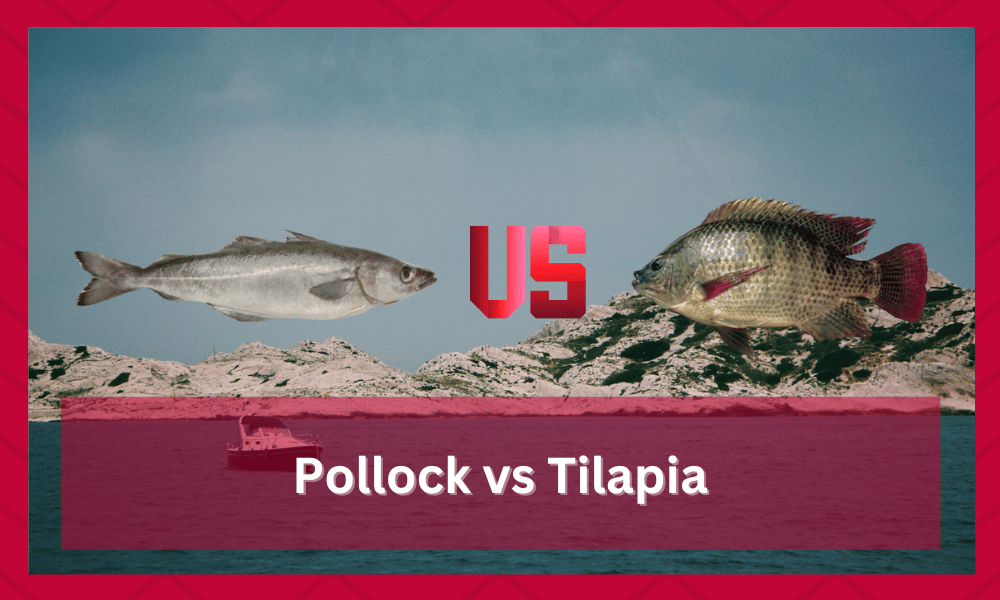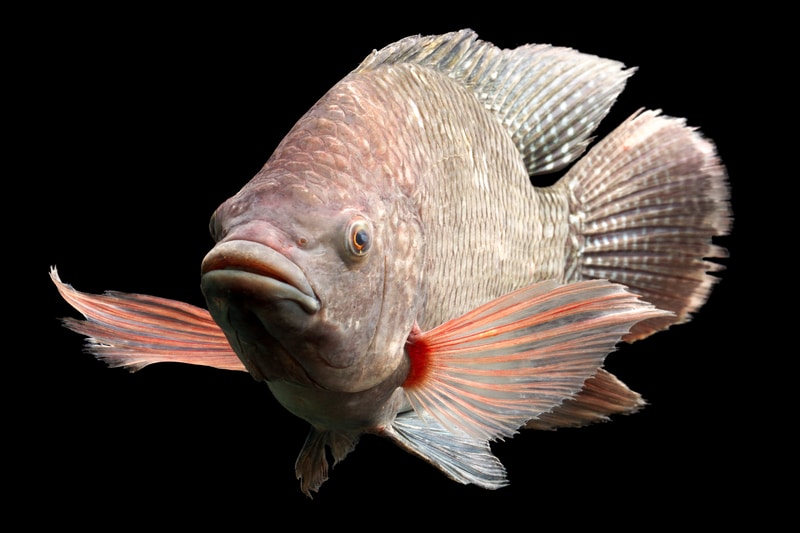
The primary reason why people think fish is healthy is that it offers more omega-three fats than any other meat on the market.
However, not all fish bring the same health benefits to the table. The amount of nutrients can easily vary depending on the variety.
The origin of the fish and the farming method plays a considerable role in determining whether or not a fish is healthy for your body. So, if you’re thinking of switching up your diet, it might be better to do your research first.
Here we will go over two of the most common fish in the world called Pollock and Tilapia.
If you’re unaware of the different aspects of these two fish, then let us help you with a better understanding through this Pollock vs Tilapia guide.
Make sure that you go through the information carefully as it should help you in getting a better idea over the varieties.
Not only will this allow you to avoid problems when selecting the fish but it should also allow you to choose one that best suits your taste.
Pollock vs Tilapia
| Type Of Fish | Pollock Fish | Tilapia Fish |
| Potassium Per 100 Grams | 430 Milligrams | 302 Milligrams |
| Phosphorus Per 100 Grams | 267 Milligrams | 170 Milligrams |
| Magnesium Per 100 Grams | 81 Milligrams | 27 Milligrams |
| Vitamin B3 Per 100 Grams | 3.949 Milligrams | 3.903 Milligrams |
| Vitamin B12 Per 100 Grams | 3.66 Micrograms | 1.58 Micrograms |
Pollock
Known as the most common fish in the world, Pollock brings a delicate flavor to your dish.
It is highly likely that you’ve tried this fish without knowing about it. From fast-food restaurants to your local mart, it is widely available across all stores.
So, if you’re looking for some reasonably priced fish meat to add to your weekly diet, a Pollock might be an excellent option to look at.
It is pretty nutritious and brings a wide range of health benefits to the table if you eat it in moderation. As compared to Tilapia, Pollock has a much better reputation.
People have mentioned a more excellent texture and larger flakes in Pollock along with a refined flavor. However, you will still need to focus on your cooking technique to get rid of the fishy smell.
Once the scent is gone, this meat is quite lovely to have as a part of your daily routine.
If you’re already suffering from health issues, then it might not be such a good idea to have excessive amounts of Pollock. Make sure to consult your doctor before making substantial changes to your diet.
As far as the shape and size are concerned, you will notice Pollock has a long and cylindrical shape.
It is more significant in length when compared with Tilapia. The body is not round, and it is pretty easy to set Pollock apart from Tilapia.
Even if you’re a beginner, it shouldn’t be that difficult to differentiate between these two kinds of fish. In terms of diet, Pollock is far better than Tilapia and usually fished from its natural environment.
That means you don’t have to worry about chemicals and other continents in the meat compared to Tilapia. Some users might think about catching these varieties on their own.
When it comes to this, you should note that pollock are some of the easiest to catch fish.
The only thing you need to do is select your location carefully. This usually determines how many varieties can be caught. If you are having trouble, then look for some spots that have confirmed sightings of these fish.
This might take some time, but you should note that it is best that you visit an area that has less fishermen.
This helps in ensuring that other anglers do not capture all the pollock roaming around. Fishing during early mornings is also better as it helps in ensuring that you have better visibility.
The temperature is also low during this time which is why there might be a lot more fish roaming around. The season that you fish in also plays a huge role so make sure that you keep these factors in mind while you are fishing.
Tilapia
Just like Pollock, Tilapia is also ubiquitous worldwide because of its cheaper price tag. It is readily available in most fish markets.
However, the main difference between Tilapia and Pollock is that Tilapia is farmed in unsanitary conditions where several chemicals are introduced into the environment.
The majority of the time, Tilapia is not a good food to pick for your dietary routine.
So, even if you’re getting a good deal on Tilapia, it is better to stay away if you want to remain healthy.
Other than that, if you’re sure that Tilapia was fished from a natural setting, then you can use it without worrying about much.
So, if you’re craving Tilapia, the best choice would be to refer to a reliable buyer. They will provide you with quality fish.
Aside from this, there are many alternatives, and if you’re not a picky eater, you will get a similar taste from Pollock.
Some people have also mentioned that the Pollock tastes better than Tilapia, so now might be a good time to do so if you haven’t tried it before.
In terms of size and shape, Tilapia is shorter in length. It also maintains a rounded shape compared to the side with Pollock.
This fish also has an imbalance of omega-six to the omega-three ratio, which is why many people avoid it.
Pollock suits anyone into fitness better. It brings all the advantages of eating a fish without having to worry much about the downside.
Tilapia’s texture is also somewhat dull in comparison to Pollock’s. Considering all these things, Pollock is just superior to Tilapia. So, if you’re going to a fish market soon, don’t be swayed by the low-price tag on Tilapia.
If your budget allows you, always choose the former over the latter when it comes to Pollock vs Tilapia.
Some people might think about catching these fish, but when it comes to this, there are several things that should be kept in mind.
The first thing people need to understand is how they can tell these varieties apart.
The best way to do this is by looking at the color of the fish as well as its meat. You will notice that wild Tilapia have a darker shade on its meat compared to the ones bred in farms.
Aside from this, the color of the fish is also different which makes it easier for people to tell these apart.
Another factor that can be kept in mind is the condition of fins on these fish. These are usually round and soft because the variety roams around in streams of water.
When comparing the fins from wild Tilapia with farm bred fish, you will notice that these have damaged fins.
The main reason behind this is that the fins get damaged because there are tons of fish roaming around in a tight space. This causes the fins to get damaged and get brittle.
With that being said, the information provided above is more than enough for most people to understand how these varieties are different from each other.
Both of them can be amazing but the choice mostly depends on your personal preferences and taste.



